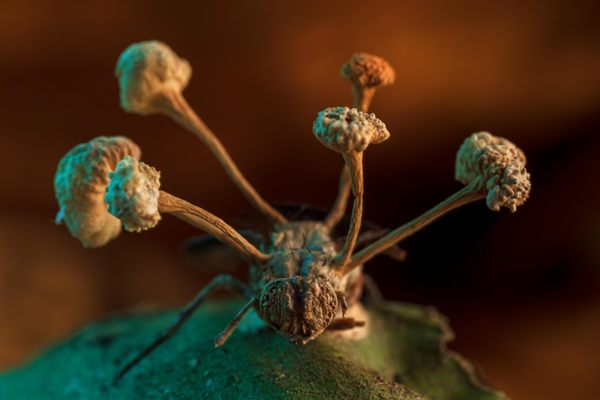Why Meat from Scared Animals Tastes Worse

Don’t worry, little guy, you’re going to be fine! You’re a model! (Photo: Public domain/Pixabay)
If you’re ever locked in a cage in a gingerbread house, screaming in terror as you’re menaced by a wicked witch, take heart: she isn’t planning to eat you.
At least, not if she wants you to taste good. That’s because when animals (and presumably humans) have been frightened or stressed out before death, it actually affects the quality of their meat.
The scientific basis for the phenomenon is well-established, and it’s frequently been discussed as a reason to make slaughterhouse practices more humane. The key ingredient here is lactic acid: in an unstressed animal, after death, muscle glycogen is converted into lactic acid, which helps keep meat tender, pink, and flavorful. Adrenaline released by stress before slaughter uses up glycogen, which means there’s not enough lactic acid produced postmortem. This affects different kind of meat in different ways, but in general it’ll be tough, tasteless, and high in pH, and will go bad quicker than unstressed meat. (Lactic acid helps slow the growth of spoilage bacteria.)
In pigs, stress and fear of all kinds right before slaughter—due to factors like rough handling, adverse conditions, fighting, or botched stunning—breaks down glycogen, making the meat pale, acidic, and crumbly. The technical name for this is “pale soft exudative” (PSE) meat, and it looks and tastes as unappetizing as it sounds. PSE meat is usually unsellable, and the pork industry loses $275 million a year on meat that has to be discarded because of pre-slaughter fear and stress. That’s a huge chunk of change but it’s not quite enough to spur large industrial farms to give their pigs a calmer, safer death. Because so much pork is sold as ground meat, according to the Atlantic, some of the lower-quality PSE meat can be snuck in without consumers noticing, so its effect on profits isn’t nearly as high as the costs of improving conditions across the board.
For cattle and sheep, and occasionally pigs and turkeys, the bigger concern is “dark, firm, and dry” (DFD) meat. This is also caused by pre-slaughter fear and stress depleting muscle glycogen. DFD meat is tough, dry, acidic, and dark in color; like PSE meat, it has a shorter shelf life, too.

PSE (left), normal, and DFD (right) meat. (Photos courtesy of the Food and Agriculture Organization of the United Nations, “Guidelines for Human Handling, Transport, and Slaughter of Livestock”)
If you’re looking to avoid PSE or DFD meat, the period right before slaughter is the most important. Heat and humidity, hunger, exhaustion, long transport periods, and fighting in the pens have all been implicated, as well as mistreatment and anxiety at the slaughterhouse itself. Reducing those conditions will mean tastier meat. But some small farms that pride themselves on raising humane meat go further, giving their pigs and cattle an actual spa treatment.
At idyllic farms producing Kobe beef or Parma ham, pigs gambol around feasting on pumpkin and acorns, and cows are massaged and fed beer to stimulate their appetite. These lifelong luxuries may make for better-tasting meat, and they definitely lend an air of opulence to the product—which means higher price points that, along with the reduction in wasted PSE or DFD meat, helps make the first-class treatment cost-effective.
But not everyone thinks scared meat tastes bad. According to animal rights advocates, dogs that are slaughtered for food in Korea are treated inhumanely, even compared to U.S. livestock, because the rush of adrenaline is thought to enhance the flavor. This sounds like a racist myth, and it may be (although the part about eating dogs is true—not every culture sees them as pets!), but it’s shown up in places as august as the Guardian. For some, anxiety might be an acquired taste.
Gastro Obscura covers the world’s most wondrous food and drink.
Sign up for our email, delivered twice a week.































Follow us on Twitter to get the latest on the world's hidden wonders.
Like us on Facebook to get the latest on the world's hidden wonders.
Follow us on Twitter Like us on Facebook